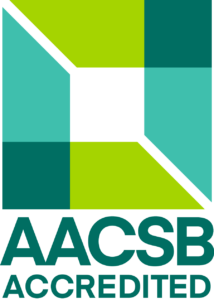International Economic Relations
- Credits: 8
- Ending: Examination
- Range: 4P + 4C
- Semester: winter
- Year: 3
- Faculty of International Relations
Teachers
Included in study programs
Teaching results
The aim of the course is to provide students with the theoretical foundations of international economics, especially in the field of international trade and the international resource movements, as well as practical knowledge about the current developments in international economic relations. The course emphasizes understanding the causes and consequences of economic interactions between the actors of the global economy, as well as the policies that influence these interactions and their economic outcomes.
Students will primarily acquire knowledge about:
• the structure and challenges of the contemporary global economy,
• the economic significance and consequences of various forms of international economic relations,
• policies and corresponding tools that influence international economic relations,
• development trends in global trade in goods and services, regional economic integration, international capital flows, and international labor movement,
• the institutional framework of the current international economic system,
• the involvement of the Slovak Republic in international economic relations.
Skills:
• students will be able to apply theoretical knowledge of international economics and related economic disciplines in the practice of international economic relations,
• students will be able to objectively evaluate current events and interconnections in the system of international economic relations,
• students will be able to graphically analyze certain phenomena occurring in international economic relations,
• students will be able to work with statistical databases and other information sources relevant to the field of international economic relations.
Competencies:
• identification and prediction of development trends in various forms of international economic relations,
• critical and creative thinking in the context of challenges and proposing solutions to issues in contemporary international economic relations,
• enhancing communication, presentation and argumentation student competences through practical exercises.
Indicative content
Introduction to the study of international economic relations. Structure of the global economy. Theoretical aspects of international trade. Development of world trade. Protectionism and tariff measures of commercial policy. Non-tariff measures of commercial policy. Liberalization of international economic relations. Multilateral trading system. International economic organizations. International capital movement. International movement of labor. Slovakia's involvement in international economic relations. Environmental aspect of international economic relations.
Support literature
Primary literature:
1. JANČOVIČ, Peter – DUDÁŠ, Tomáš (2024): Medzinárodné hospodárske vzťahy: teória a prax. Bratislava: Sprint dva, 1. vyd. ISBN 978-80-89710-61-4.
2. JANČOVIČ, Peter (2023): Medzinárodné hospodárske vzťahy. Praktikum. Bratislava: Vydavateľstvo EKONÓM, 1. vyd. ISBN 978-80-225-5105-2.
Secondary literature:
3. LIPKOVÁ, Ľudmila a kol. (2011): Medzinárodné hospodárske vzťahy. Bratislava: Sprint dva. ISBN 978-80-89393-37-4.
4. SCHENK, Catherine R. (2021): International Economic Relations since 1945. Londýn: Routledge, 2. vyd. ISBN 978-0-8153-9559-1.
5. SALVATORE, Dominick (2014): International Economics. Trade and Finance. Singapur: John Wiley & Sons Singapore. ISBN 978-1-118-17794-5.
6. FEENSTRA, Robert C. – TAYLOR, Alan M. (2017): International Economics. New York: Worth Publishers. ISBN 978-1-319-06171-5.
7. MAJEROVÁ, Ingrid – NEZVAL, Pavel (2011): Mezinárodní ekonomie v teorii a praxi. Brno: Computer Press. ISBN 978-80-251-3421-4.
8. BALÁŽ, Peter a kol. (2019): Medzinárodné podnikanie. Bratislava: Sprint dva. ISBN 978-80-89710-51-5.
9. KRUGMAN, Paul R. a kol. (2018): International Economics. Theory and Policy. Harlow: Pearson Education. ISBN 978-1-292-21487-0.
10. REINERT, Kenneth A. (2021): An Introduction to International Economics. New Perspectives on the World Economy. ISBN 978-1-108-45516-9.
Syllabus
1. Introduction to the study of international economic relations – basic terminology, forms of implementation, international economic transactions, and the balance of payments. 2. The global economy – actors, structure, and development trends. 3. International division of labor. Theoretical aspects of international trade in goods and services. 4. Historical development of world trade. Current territorial and sectoral structure of world trade in goods and services. 5. Protectionism in international economic relations. Tariff measures of commercial policy. 6. Non-tariff measures of commercial policy. Pro-export policy and economic diplomacy. 7. Liberalization of international economic relations. International economic integration. 8. Multilateral trading system. General Agreement on Tariffs and Trade and the World Trade Organization. 9. International economic organizations. 10. International capital movement. Global flows of foreign direct investment. Investment promotion policy. 11. International labor movement and personal remittances. 12. Involvement of the Slovak republic in international economic relations. 13. Environmental aspect of international economic relations.
Requirements to complete the course
The final grade is based on a continuous assessment during the study part of the semester and an oral exam as follows: 40% of the final grade consists of the continuous assessment during the semester (10% of the overall assessment comes from an active participation in seminars and 30% comes from a written test in the second half of the semester), and 60% of the final grade is made up of an oral exam taken during the exam period.
Student workload
208 hours, out of which attendance at lectures represents 52h, participation in seminars represents 52h, preparation for seminars takes 26h, preparation for the test takes 26h, and preparation for the final exam takes 52h
Language whose command is required to complete the course
Slovak
Date of approval: 20.02.2025
Date of the latest change: 15.08.2025

